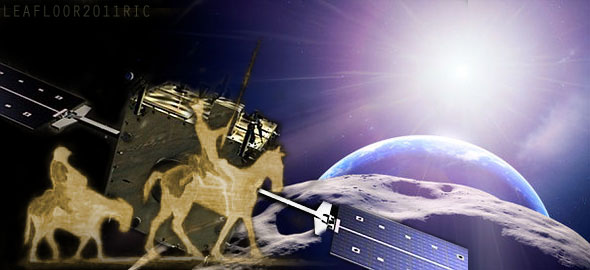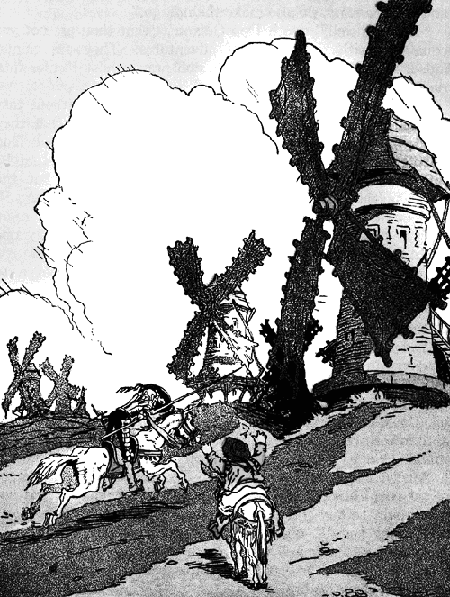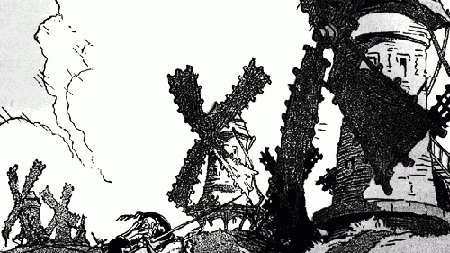Fact following fiction? Scientists plan mission to blow up an asteroid ’hurtling towards Earth’
Source: dailymail.co.uk

Scientists plan to smash a spacecraft into an asteroid so that they are prepared for having to stop one hurtling towards Earth.
The news came as Nasa moved to calm fears that a comet is on a collision course with our planet.
The plans for a test mission to stop an asteroid from colliding with Earth come from Nasa’s cousin, the European Space Agency.
In the Hollywood movie Armageddon, Bruce Willis attempts to blow up a huge asteroid hurtling towards Earth.
In real life, the mission, called Don Quixote, will see two spacecraft launched.

Armageddon starred Bruce Willis as the leader of a team of astronauts who destroy an asteroid that threatens to wipe out Earth.
One will be fired at an asteroid at break-neck speed in an attempt to push it off its course. The other will analyse data with the aim of informing future missions in which the future of mankind may be at stake.
One potential target for the test mission is a 1,600ft-wide asteroid called 99942 Apophis, which has a tiny chance – around one in 250,000 – of hitting Earth in 2036.
Nasa scientists yesterday took the unusual step of officially dismissing claims sweeping the internet that comet Elenin, discovered by an astronomer last December, is on a deadly course.
Scare stories include the comet plunging the Earth into darkness for three days by blocking out the sun, colliding with Earth, moving tides or continents and throwing the planet off orbit.
It is even claimed that a fleet of UFOs are streaking towards us in the comet’s wake, and that Nasa has conspired with media organisations to create a news blackout on the comet to avoid mass panic sweeping the world.
But the space agency said Elenin will never come closer to Earth than 22million miles and will not compromise our planet in any way.
An official said: ‘The truth is that Elenin has received much more attention than it deserves due to a variety of internet postings that are untrue.’
Article from: dailymail.co.uk
Video from: YouTube.com
Wikipedia:
Don Quijote is a proposed space probe under development by the European Space Agency, which would study the effects of crashing a spacecraft into an asteroid. The mission is intended to test whether a spacecraft could successfully deflect an asteroid on a collision course with Earth. The orbiter is being designed to last for seven years.
The mission is still in the planning stages with launch dates proposed for 2013 or 2015.
The mission will consist of two spacecraft that will execute a series of maneuvers around a small, 500-metre (1,600-foot) asteroid.
The first spacecraft, Sancho, will arrive at the asteroid and orbit it for several months, studying it. The orbiter will use a single xenon ion engine.
After a few months, the second spacecraft, Hidalgo, will hurtle toward the asteroid on a collision course. Sancho will retreat to a safe distance while Hidalgo will hit the asteroid at around 10 km/s. The Lander will sleep for most of the trip and then steer itself using optical sensors with an accuracy of 50 meters.
Sancho will then return to its close orbit and see how much the asteroid’s shape, internal structure, orbit and rotation have been affected by the impact.
Sancho will release the Autonomous Surface Package, which will free-fall toward the asteroid for 2 hours before landing. This package will be directed towards the interior of the impact crater where it will investigate properties of the surface.
The mission is named after the fictional Spanish knight from Miguel de Cervantes renowned novel, Don Quixote, who charged against a windmill, thinking it to be a giant. Like the Don, the Hidalgo spacecraft will ’attack’ an object much larger than itself, hopefully with more impressive results. ’Sancho’ is named after Sancho Panza, the Don’s squire, who preferred to stay back and watch from a safe distance, which is the role assigned to that probe.
Source

Image: Source
NASA’s Deep Impact Mission (January 12, 2005)
NASA’s EPOXI mission spacecraft successfully flew past comet Hartley 2 on Thursday, Nov. 4, 2010. EPOXI is an extended mission that uses the already
in-flight Deep Impact spacecraft. Includes: EPOXI reaction to closest approach; five approach images; mission animation and interviews.
Video from: YouTube.com
The NASA spacecraft ’Stardust’ has started beaming back the first pictures of a comet that swept past it. The encounter will give scientists unique information on how these great balls of ice and dust change over time. The craft, hoped the more than 70 high-resolution images, would reveal the extent of the impact crater and surroundings.
It’s the first time a comet has been viewed by two different spacecraft.
Video from: YouTube.com
Also tune into:
Christopher Knight & Alan Butler - Civilization One, The Moon & The Megalithic Yard
Richard C. Hoagland - Comet Elenin as a Time Capsule, Norway Attack & The Messengers of Horus
Andy Lloyd - Comet Elenin, Nibiru & Planet X
John Lash - Sophia’s Correction, Earth Changes & Stellar Anomalies
Andy Lloyd - Dark Star, Evidence for Planet X
Michael Tsarion - Lucifer & The Dark Side of the Sun
Richard C. Hoagland - The Secret Space Program & The Fukushima Nuclear Reactor Disaster
Richard Dolan - The Secret Space Program & Breakaway Civilization






















